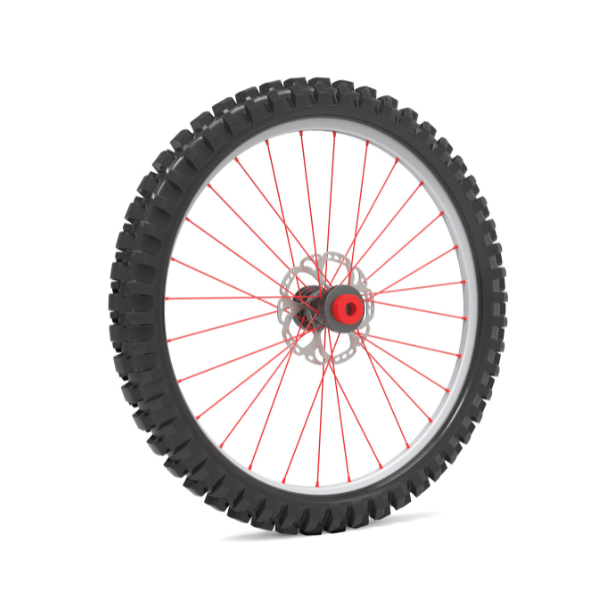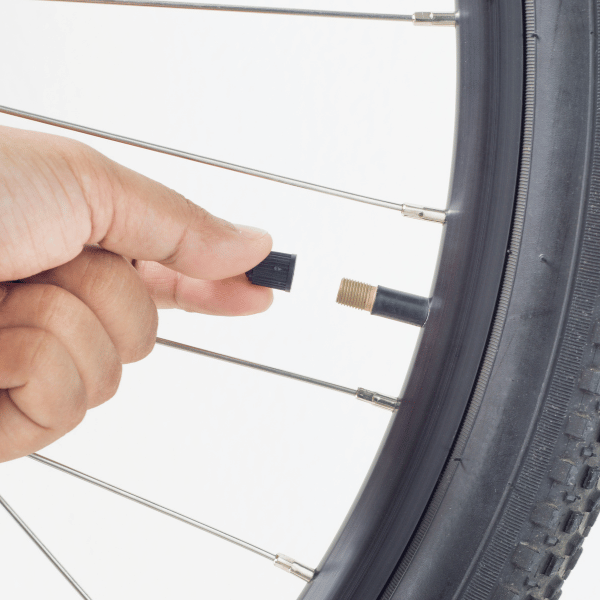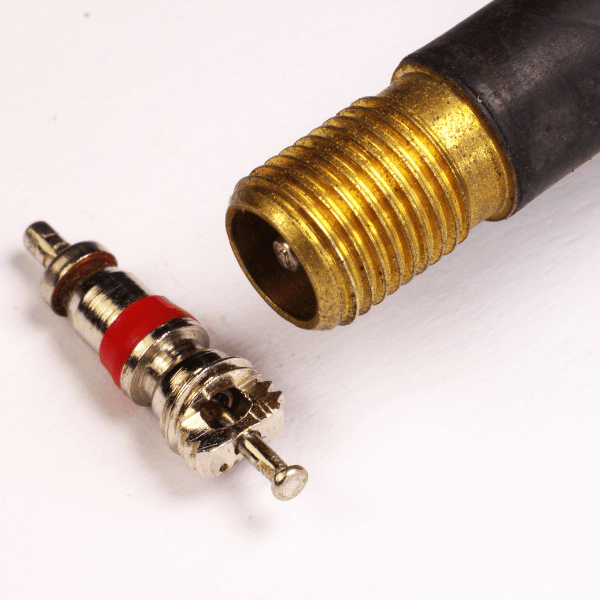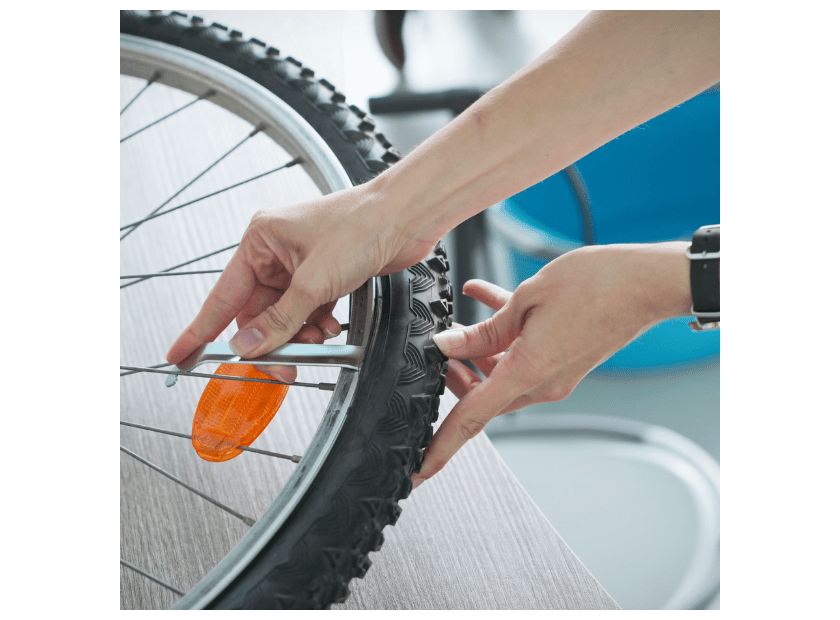Why Are My Tubeless Mountain Bike Tires Leaking Air Around the Valve?
Tubeless mountain bike tires are known to lose air at the valve for various reasons. This hitch has troubled many enthusiasts trying to get their best off-road performance. Thus, we must understand what causes this problem and how to fix it so as not to have any interruptions in our ride.
1. Understanding Tubeless Tires
What is a tubeless tire?
A tubeless tire is a modern type of biking that does away with tubes. Instead, a seal is created between the rim and the tire where the air is stored better than before, making smoother rides. These new designs allow lower pressures on tires, enhancing grip on uneven surfaces while reducing punctures, transforming mountain biking forever.
How does a tubeless tire work?
In the tubeless setup, the wheel’s rim and its corresponding tire form an airtight joint or bond, making them one unit through which no airflow can take place except when necessary, such as during inflation or deflation. The sealant fills any holes or gaps inside the tire, ensuring that all punctures are automatically repaired without the need for intervention by cyclists themselves.
Benefits of using tubeless tires
There are several benefits associated with using tubeless tires when riding off-road bikes. The lighter weight translates into faster speeds, especially uphill sections; lower air pressures increase traction, thus improving control over loose surfaces, while liquid sealants protect against punctures, giving rise to smoother rides, among others mentioned here now.

2. Common Causes of Leaks in Tubeless Tires
Sometimes, however well something may be designed, it still has its own weaknesses that can cause failure if not well managed. Hence, even though they boast these numerous merits, unfortunately, some problems arise from time to time, like leakage around valves due to improper fitting/installation, etcetera.
Undoubtedly, other factors are responsible for certain incidences, but we shall only focus on those most frequently encountered.
What are some common causes of tubeless tire leaks?
Knowing how to fix these common issues will help you prevent them in the future.
1. Poor installation or improper fit – This is the most common cause of leaks in tubeless tires. It happens when the valve stem does not fit tight enough into the rim hole, or there is a gap between the rubber and metal parts of the valve.
2. Damaged tire or rim – If your tubeless tire has been poorly punctured by sharp objects such as nails, screws etc., it might develop leaks around its sidewall area where sealant cannot reach easily.
3. Loose valve core – Sometimes air can escape through loose cores that are not tightly screwed onto valve stems thus resulting into losing much more than expected within shortest possible period; this remains one among other potential culprits worth looking at during the inspection process, though often overlooked by many people who take pride themselves being experts;
4. Worn out sealant – Tubeless tires are becoming increasingly popular among cyclists as they offer numerous benefits over traditional clincher tires. They provide a smoother ride, better traction, and decreased risk of flats. However, like any other type of tire, tubeless tires require regular maintenance to perform their best.
This article will walk you through the most common tubeless tire problems and how to troubleshoot them.
1. Sidewall Leaks
Sidewall leaks can be tricky because cuts or abrasions in the sidewall compromise the tire's ability to hold air.
To fix this:
Inspect the sidewall for damage and make sure the tire and rim tape are correctly installed.
Use liquid sealant for small punctures; larger tears may require patching from the inside or even replacing the tire.
2. Troubleshooting Tubeless Valve Leaks
Valve leaks are another common issue with tubeless tires that can cause frustrating air loss and performance problems.
To diagnose a valve leak:
Make sure the valve core is screwed in tightly — a loose valve core can often be the culprit behind air loss.
Apply soapy water around the valve core; if it bubbles up, there's a leak. If necessary, tighten it with a valve tool.
If it still leaks after tightening, replace the valve core.

3. Effects of a leaking valve on air pressure
A leaking valve can significantly affect air pressure in your tubeless system, resulting in poor performance and an increased risk of burping (suddenly losing all air) or detaching from the rims.
To prevent this:
Keep correct pressure limits for optimal riding experience on different surfaces.
Check regularly for signs of leakage at valves – especially when fitting new ones!
Apply grease before use where appropriate to ensure all connections between components, such as pump heads and valve stems, seal properly.
3. Fixing Tubeless Tire Punctures
Punctures are inevitable in cycling life, but they don't have to ruin your ride. With a few simple steps, you can quickly repair most tubeless tire punctures on the go.
For sidewall punctures:
Identify where the hole is by visually inspecting the outside of the tire.
Clean and dry the area around the puncture.
To seal the tire, apply a tubeless tire patch from the inside. Follow the manufacturer's instructions for the best results.
For small holes:
Ensure your tire has enough sealant (60-120ml for mountain bikes, 30-60ml for road bikes).
Rotate the wheel so that sealant flows into and plugs up the hole.

For large breaches:
If sealant doesn't work, use a tubeless repair plug or patch kit designed for larger holes.
The clean and dry the area around the puncture.
Insert the plug into the hole and trim any excess sticking out.
Inflate the tire to check if it seals; repeat the process with another plug until it is sealed properly.
When in doubt about whether a repair will hold up under pressure or not, always seek professional help from skilled mechanics who specialize in such repairs instead
Using soapy water allows for detecting leaks that cannot be seen. It’s not always easy to spot a leak in a tire when you don’t know where it is. Soapy water can help solve this problem by revealing the location of any hidden punctures or cuts. Just apply the soapy water to the tire's surface and wait for bubbles to form. If air leaks out, it will create tiny foam bubbles at that spot. This method is beneficial for finding slow, gradual leaks that would otherwise be difficult to locate because they don’t produce an audible hissing sound as larger holes do.
4. Expert Tips on Tubeless Tire Care
Frequently changing tires
Changing your tires frequently is also an excellent way to prevent leaks from occurring altogether. Over time, rubber can become dry and brittle, making it more susceptible to cracking and developing small holes—especially if you ride on rough terrain with lots of sharp rocks or glass shards lying around! Replacing them regularly before they wear out too much reduces the chances of experiencing sudden blowouts caused by old, worn-out treads suddenly giving way under pressure.
Adjusting valve cores
Another common cause of air leaks in tubeless systems is improperly adjusted valve cores. The valve core is located inside each tubeless valve stem and acts as a one-way check valve that allows air into the tire but prevents it from escaping back out again when not under pressure (such as during inflation). Suppose this core becomes loose or isn’t tightened enough after being removed for sealant top-ups or other maintenance tasks. In that case, it can slowly unscrew itself over time due to vibrations caused by riding over rough surfaces – eventually leading to a complete loss of sealing ability.

Adding sealant regularly
Hard-to-find leaks can be discovered if a combination of water and soap is put on the tire, especially around the valve area and rim edges, where air can bubble up. This will enable cyclists to find precisely where air is coming out of their tire setup, which is crucial for successful diagnosis and repair. Rinse your tire well after checking to avoid leaving any film that could affect balance or grip.
Take off and re-seat the tire for stubborn leaks.
If leaks continue after all other attempts have failed, taking off the tire altogether may be necessary – but make sure to do this in a controlled manner! Inflate then deflate the inner tube repeatedly until you see that it has sat around both sides of the wheel evenly; this helps everything fit together more tightly so there are no gaps between them through which air might escape. The seating action needs to be done correctly because, without proper contact against rim walls, there will not be an airtight seal, hence good MTB performance on trails.
Frequently Asked Questions
Q: What is wrong with my tubeless mountain bike tire when air escapes around the valve?
A: Tubeless tires may leak air through the valve for many reasons. A common one is not fitting the tire bead and rim properly so it does not seal well at the valve hole.
Q: How do I fix a leak around the valve stem of my tubeless tire?
A: You can fix a leak around the valve stem by removing the tire, cleaning the rim, and making sure that the bead is correctly seated on the rim. In addition, more sealing compound should be put around where there is contact between the two parts so that they form an airtight seal that won't allow any air leakage through.
Q: What tools are required to set up tubeless tires on my mountain bike?
A: To set up tubeless tires on your mountain bike, you will need tire levers, tubeless sealant, a floor pump (to inflate), and tubeless rim tape (to seal).
Q: How can I tell if my tubeless tire has a slow leak?
A: Some signs of slow leaks in tubeless tires include gradual deflation over time or bubbles coming out when pumping them up. Alternatively, using soap mixed with water could also help identify where exactly there might be a problem area causing this continuous loss of pressure.
Q: Is fixing a tubeless valve leak possible without removing the tire?
A: Sometimes, tightening up nuts around the base or adding more compound at its bottom might help resolve such issues without removing the tires altogether.
Q: What should I do if my tube-less tire loses air after the initial setup?
A: In case your initially installed tube-less tyre keeps losing pressure over short periods, then consider inflating it further beyond recommended limits to create a tighter fit between beads onto rims or inspecting for any damages that could lead to leaks around these parts.
Q: Do tubeless mountain bike tires often lose air around the nipple?
A: Yes, tubeless tyres on mountain bikes can loose pressure around nipples if there’s been a breakdown of sealing compound at spoke holes or nipples themselves. Re-applying more compound over them again tightly should prevent escaping air bubbles.


